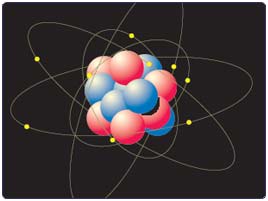Is the DNA Molecule Life?
By The Late Dr. T.D. Singh | Дек 20, 2008

Descriptions of DNA and its replication mechanism are commonly given as though they have provided a complete description of the most fundamental processes of life — a final mechanism, step-by-step breakdown of these life processes into understandable chemical terms. However, this is far from truth. An enormous gulf lies between the few simple chemical facts known about DNA and the actual functioning of a cell. All that science actually knows about DNA are a few relations between inanimate chemicals. The gap between this knowledge and an actual chemical understanding of life is bridged only by faith.
Although we may imagine that the cell is nothing more than an elaborate chemical machine, we actually do not at all know how this machine works. We have no idea how the large-scale atoms of a cell (what to speak of a multicellular organism) can be reduced to the reactions of molecules. Indeed, we do not even fully understand the chemical interactions of water molecules; and the operations of enzymes composed of hundreds of amino acids are certainly a mystery.
At this stage of scientific knowledge, all the experimental techniques and tools needed to synthesize most of the chemicals primarily found in living cells (for example, proteins, hormones, lipids, carbohydrates, vitamins and genes) are available. Yet, we are nowhere near to constructing a complete “synthetic living cell” in the test tube. The great hope expressed by many molecular biologists about a half century ago (after the historic discovery of the double helical structure of DNA by Watson and Crick) seems to have faded away in the midst of new discoveries.
Indeed, the findings of the biochemists, far from proving that life is a chemical phenomenon, have strongly demonstrated that present scientific understanding of life is certainly inadequate and further suggests that life is beyond atoms molecules. In Darwin’s time, the cell appeared to be little more than a simple bag of organic compounds that one might readily hope to describe in chemical terms. The enormous complexity encountered in recent biochemical investigations, however, has shown that this hope is unrealistic. Modern science is, indeed, far from having understood the principles of life.
Szent-Gyorgyi, the Nobel Prizewinning chemist, thus remarked: “In my search for the secret of life, I ended up with atoms and electrons, which have no life at all. Somewhere along the line, life has run out through my fingers. So, in my old age, I am now retracing my steps ”¦” This is the basic point to be emphasized. Atoms and molecules are lifeless. A gene or a DNA molecule is not life. Similarly, a protein or sugar molecule is not life. Indeed, I propose that a mixture of various biomolecules is also not and never will become life. The announcement of Khorana’s synthetic gene in 1970 is not different from that of Wohler’s synthesis of urea in 1828, as far as our understanding of life is concerned. On the other hand, all these scientific results seem to confirm the divine source of life as is revealed in different scriptures.
This article is an excerpt from the late Dr. T.D. Singh’s (Bhaktisvarupa Damodara Swami) book Life, Matter and Their Interactions.















